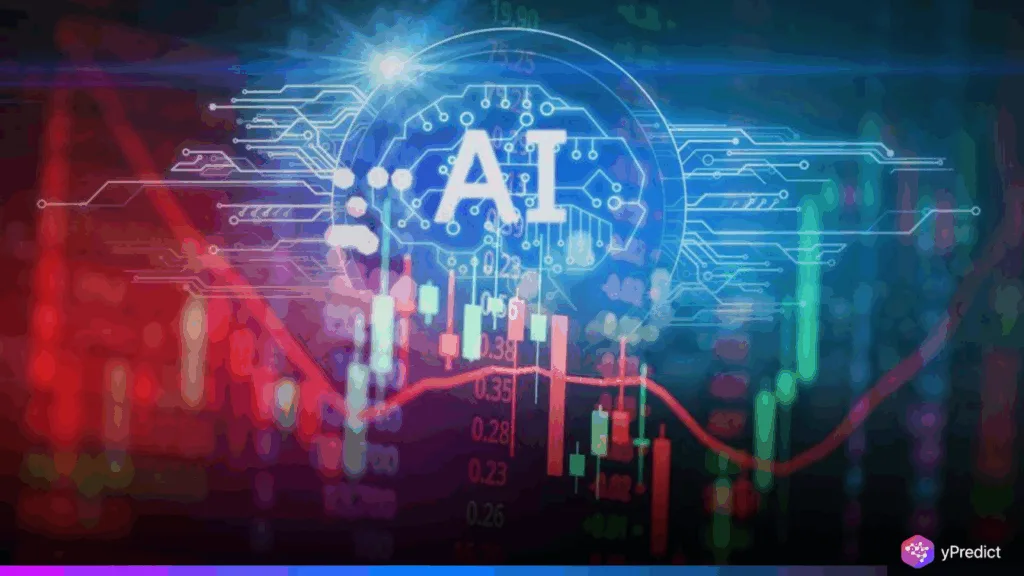
A recent X post by Jukan (@Jukanlosreve) has reignited debate over whether today’s AI market is heading toward a bubble burst. Reminiscent of the late 1990s dot-com crash. The post features a BofA Global Research chart showing U.S. investment-grade corporate bond spreads for tech companies. With notable spikes in 1999-2000 and 2021-2022. As of August 2025, spreads sit at just 56 basis points, suggesting market optimism. However, BofA strategist Michael Hartnett warns that a sharp widening could signal trouble ahead. The comparison draws on history to question. Whether heavy AI infrastructure spending today mirrors the overinvestment patterns of past tech booms.
Credit Spreads as a Warning Signal for an AI Market Correction
Credit spreads provide a market-based relative measure of risk, or the difference between yields of corporate bonds and risk-free government bonds. Tight spreads, such as the present 56 basis point spread on U.S. technology companies, signify stock investor confidence. Whereas a widening spread denotes increasing panic. Spreads climbed over 400 basis points in 1999-2000 during the dot-com bubble burst. After a period of heavy overinvestment in fiber-optic networks and internet infrastructure on the back of massive debt financing.
The 2021-2022 burst was smaller; it was analogous to the volatility and speculative fervor of the pandemic-related enthusiasm over AI. The worry today is whether the huge capital expenditures (CAPEX) incurred by the tech giants on GPUs, data centers, and the study of AI technologies will be able to become sustainable. According to a study by Acadian Asset Management in 2025. Highly planned CAPEX was noted to be followed by low stock returns, indicating possible dangers of overbuilding.
Michael Hartnett (BofA) frames widening tech credit spreads as a critical early warning indicator, a “canary in the coal mine” for investors. If spreads jump, it’s a sign of high cash burn intolerance and dwindling faith in future returns. As markets currently look on the bright side, history tells us that sentiment can flip very quickly at the point that financial stress begins, making credit spreads of particular interest in terms of anticipating potential stress in the AI space.
Why the AI Spending Boom Differs from the 1990s Fiber-Optic Frenzy
Despite parallels to the dot-com collapse, the AI investment landscape shows important differences. In the late 1990s, over $500 billion was poured into telecom infrastructure by a wide array of companies, many outside the core tech sector. The resulting overcapacity, paired with drying credit, led to bankruptcies and massive investor losses. In contrast, today’s AI spending is concentrated among well-capitalized hyperscalers like Microsoft, Google, and Amazon.
Analysts such as @Maside Koruturk argue this concentration could mitigate risks associated with “excessive” CAPEX, as these firms possess the scale and diversified revenue streams to absorb high upfront costs. In addition, AI infrastructure, involving data centers to bespoke silicon, could have long-term, enduring utility, even when enthusiasm waxes and wanes in the short term. Examples of established platforms that survived when many startup havens were popping up due to a dot-com boom/bust include Amazon and eBay. Just because lots of infrastructure and a brand name support a dot-com startup does not make it less prone to markdowns than a startup.
Balancing AI’s Transformative Potential with Market Caution and BofA
It is easy to conclude that the present-day AI boom is on a very thin edge between groundbreaking innovation and effusive speculation. Although concentrated investment by industry giants can protect the sector before it collapses completely, history has shown that even market leaders are not exempt in the case of overextension. The most monitorable indicator is the credit spreads; any march that significantly changes is likely to signal a change in sentiment and funding environment.






